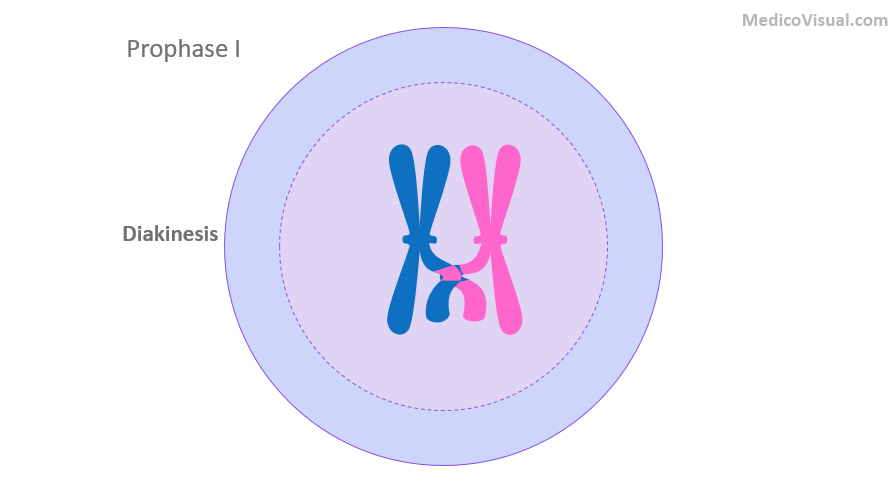Meiosis
1/27
There's no tags or description
Looks like no tags are added yet.
Name | Mastery | Learn | Test | Matching | Spaced |
|---|
No study sessions yet.
28 Terms
Genes
The units of heredity and are made up of segments of DNA
Gametes
The reproductive cells that allow genes to be passed down
Sperm or egg; contains a single set of chromosomes and is haploid (n)
Only type of human cells produced by meiosis rather than mitosis
Fuse to form a diploid zygote that divides by mitosis to develop into a multicellular organism
Somatic Cell
the cells of the body except for gametes and their precursors
In humans have 23 pairs of chromosomes
Locus
specific locations for each gene on the chromosome
Asexual Reproduction
reproduction in which a single individual passes gene to its offspring without the fusion of gametes
Clone
a group of genetically identical individuals from the same parent, produced asexually
Sexual reproduction
reproduction in which two parents give rise to offspring that have unique combinations of genes inherited from two parents
Karyotype
an ordered display of the pairs of chromosomes from a cell
homologous chromosome
the two chromosomes in each pair
The chromosomes in a homologous pair are the same length and shape and carry genes controlling the same inherited characters
Sex chromosome
a package of DNA with part of/all of the genetic material
Determine the sex of the individual; called X and Y
Females have a homologous pair of X chromosomes (XX)
Males have one X and one Y chromosome
Autosome
the remaining pairs of chromosomes aside from the sex chromosomes
Diploid
(2n) an organism has two complete sets of chromosomes
23 from the mother; 23 for the father; total of 46
Haploid
an organism that has one set of unpaired chromosomes; 23n
Each set of 23 consists of 22 autosomes and a single sex chromosome
Fertilization
the union of gametes (the sperm and the egg cell)
Zygote (egg after union) has one set of chromosomes from each parent and so is diploid
Zygote produces somatic cells by mitosis
Meiosis
Takes place in two sets of cell divisions, which result in 4 daughter cells each of which only have half as many chromosomes as the parent cell
Produce gametes
Results in one set of chromosomes in each gamete
This, when combined with fertilization, maintain chromosome number
Reduces the number of chromosomes sets from two (diploid) to one (hapoloid), producing cells that differ genetically from each other and from the parent cell
Produces 4 new haploid cells
Meiosis I
Prophase I: synapsis and crossing over
Homologous chromosomes physically connect and exchange genetic information
Two members of a homologous pair associate along their length, allele by allele
Metaphase I: alignment of homologous pairs; homologous pairs of chromosomes are positioned there in the first phase of this
Homologous pairs line up at the platem with one chromosome facing each pole
Microtobules from one pole are attatched to the kinetochore of one chromosome of each tetrad
Anaphase I: Separation of homologs
One chromosome moves toward each pole, guided by the spindle apparatuus
Telophase I: at the beginning of this stage, each half of the cell has a haploid set of chromosomes
Each chromosome still consists of two sister chromatids
Cytokinesis usually occurs simultaneously, forming two haploid daughter cells

Meiosis II
Occurs in four phases:
Prophase II:
Spindle apparatus forms
Later in this stage chromosomes (each still comprised of two chromatids) move toward the metaphase plate
Metaphase II: the sister chromatids are arranged at theplate
Because of crossing over in in the first version of this stage, the two sister chromatids of each chromosome are no longer genetically identical
The kinetochores of sister chromatids attatch to microtubles extending from extending opposite poles
Anaphase II:
In this stage, the sister chromatids separate
The sister chromatids of each chromosome now move as two newly individual chromosomes toward opposite poles
Telophase II + cytokinesis
Nuclei form, and the chromosomes begin decondensing
At the end of meiosis, there are four daughter cells, each with a haploid set of unduplicated chromosomes
Each daughter cell is genetically distinct from the others and from the parent cell

Chromosomes
Each one replicated consists of two identical sister chromatids
Sister chromatid
identical copies of a chromosome that are joined together by a centromere
Crossing Over
nonsister chromatids exchange DNA segments
Produces recombinant chromosomes- combine DNA inherited from each parent
Contributes to genetic variation by combining DNA, producing chromosomes with new combinations of maternal and paternal alleles
Independent Assortment
one of the mechanisms that contributes to genetic variation
Homologous pairs of chromosomes orient randomly at metaphase I of meiosis
Each pair of chromosomes sorts maternal and paternal homologs into daughter cells independetly of the other pairs
Number of combinations possible when chromosomes assort independently into gametes is 2n
Recombinant Chromosome
combine DNA inherited from each parent
Random Fertilization
adds to genetic variation because any sperm can fuse with any ovum (unfertilized egg)
Each zygote has a unique genetic identity
Prophase I

Metaphase I

Anaphase I

Telophase

Meiosis II
